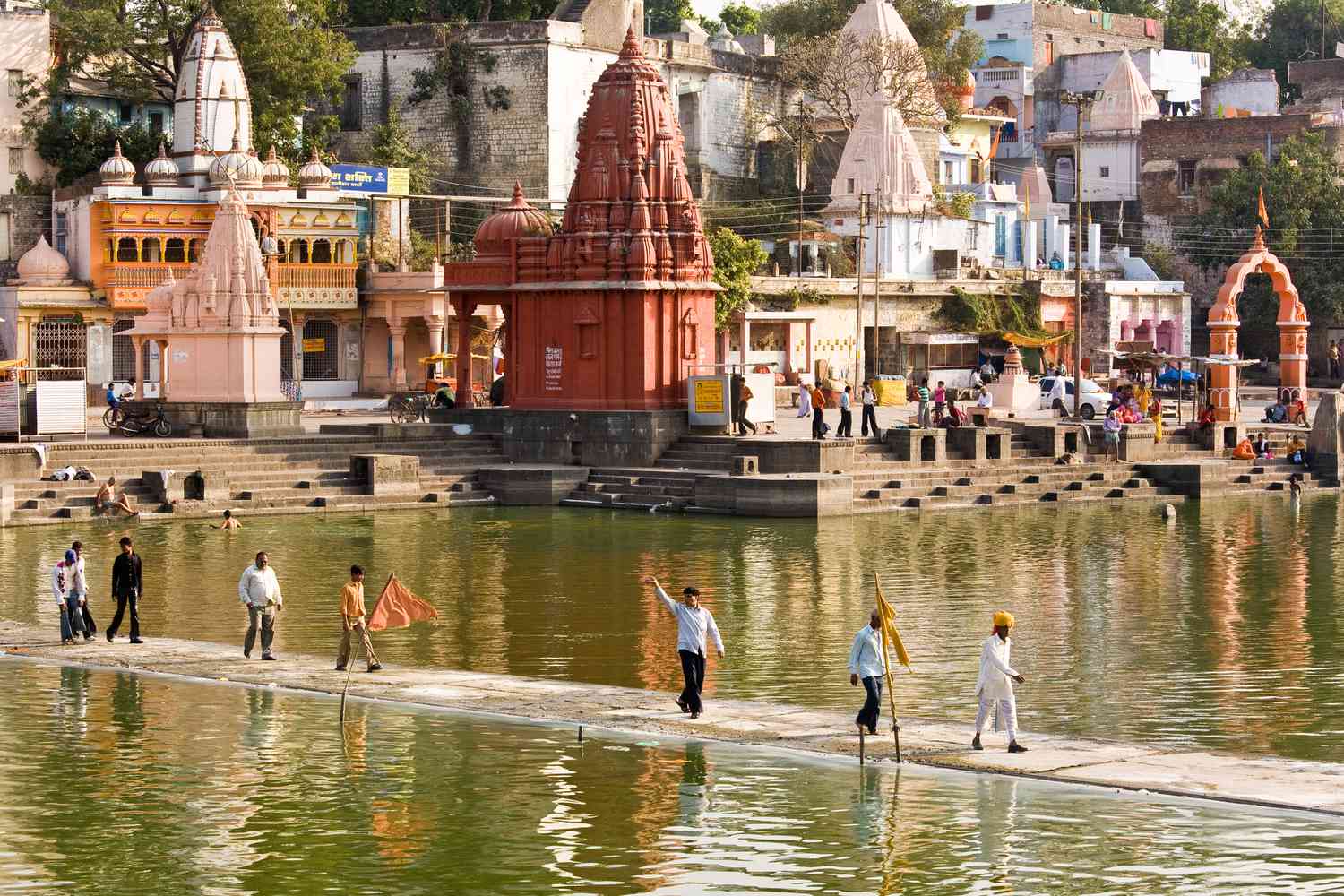- Home
- Tourism in India
- Madhya Pradesh
- Ujjain
Ujjain
Intext links
Ujjain
Country: India
State: Madhya Pradesh
District: Ujjain
Tourist Places: Mahakaleshwar Jyotirlinga, Kal Bhairav Temple, Sandipani Ashram, Mangalnath Temple.
Best time to visit: Between October and March is the best time to visit Ujjain.
Update on coronavirus in India
Introduction
Ujjain is one of the ancient cities of Madhya Pradesh, India. It is one of the seven sacred Hindu cities located on the banks of the Shipra River. Ujjain is also home to one of the twelve Jyotirlinga temples, the Mahakaleshwar Jyotirlinga Temple. It is the fifth largest city in Madhya Pradesh in terms of population and used to be an important city in Malwa Plateau during the ancient period.
Ujjain has a rich history dating back to the 7th century BC. It was once the capital of the Avanti Kingdom, one of the most powerful kingdoms in ancient India. The city was also a major center of learning and culture, and was home to many famous scholars and poets, including Kalidasa. The place is home to several universities and colleges, including Vikrama Kirti University and Ujjain Engineering College. The city has also been the center of religious, cultural and economic activities for centuries.
Ujjain is also known as Avanti, Avantika Puri and Ujjayini is home for Mahakaleshwar Jyotirlinga which is one of the twelve shrines dedicated to Lord Shiva. The city hosts the famous Kumbh Mela which takes place once in 12 years. The fair attracts thousands of devotees from across the globe.
How to reach Ujjain
Ujjain is a well-connected city, with good air, rail, and road connectivity. The nearest airport is Devi Ahilyabai Holkar International Airport in Indore, which is about 55 kilometers from Ujjain. The city is also well-connected to other major cities in Madhya Pradesh and India by train and bus.
By Air: The nearest airport is the Devi Ahilyabai Holkar International Airport in Indore. It is about 55 kms from Ujjain. Indore has very well-connected flights from Mumbai, Bangalore, Chennai, Delhi, Bhopal and many more.
By Rail: Ujjain Railway Junction is the major railway junction which is connected to all the major cities of the country.
By road: Ujjain has both private and public buses run between the neighboring cities like Indore, Gwalior, Mumbai, Ahmedabad and some of the other major cities.
Best Time to visit Ujjain
Ujjain can be visited anytime in the year. October to March is considered an ideal time to visit. However, the best time to visit Ujjain is during festivals like Mahashivratri, Mondays of Savan month, Nag Panchami and especially during Kartik Mela (yearly) and Kumbh Mela
Climate and Geography
Climate and Geography:
Ujjain is located in the Western Central Part of India. The district enjoys a sub tropical humid climate. The city is on the bank of Shipra River which flows down to Chambal.
Summer season: March to June is the summer season. The maximum temperature hovers around 45 degree Celsius.
Monsoon Season: July to September is the monsoon season. The city receives normal rainfall during the season.
Winter Season: November to February are winter months. The minimum temperature hovers around 3 degrees Celsius during peak winter months of December and January.
History of Ujjain
History of Ujjain
- Ancient Period: Ujjain has a history dating back to the time of the Mahabharata, an ancient Indian epic. It is believed to have been founded by King Shiva of the Avanti kingdom. The city finds mention in various ancient texts including the Vedas and the Puranas. Ujjain was an important center of learning, commerce, and culture during this period.
- Mauryan Empire: Ujjain was part of the Mauryan Empire under the reign of Emperor Ashoka. It was a prominent center for trade and administration. When Bindusara was the king at that time Ashoka served as a viceroy in Ujjain.
- Gupta Empire : During the Gupta period, Ujjain emerged as a major cultural and intellectual hub. It was renowned for its contributions to astronomy, mathematics, and literature. The mathematician and astronomer Aryabhata is believed to have lived and worked here. Kalidasa mentions about the richness of Ujjain in his epic work Meghaduta. The Chinese pilgrim who visited India in the 6th century also describes the ruler of Avanti as a generous person.
- Rise of Hindu Dynasties:
- Ujjain saw the rise of various Hindu dynasties such as the Paramaras, the Pratiharas, and the Chandellas, who ruled over the region between the 9th and 12th centuries.
- Medieval Period: Ujjain witnessed the rule of the Delhi Sultanate in the 13th century followed by the Mughals in the 16th century. During this time, the city declined in importance but remained a significant center for pilgrimage.
- Maratha Rule: In the 18th century, Ujjain came under the rule of the Marathas, who contributed to its revival as a cultural and religious center.
- British Era: Ujjain came under British rule in the 19th century and was part of the Central Provinces of British India. The British made administrative changes and developed infrastructure in the city.
- Post-Independence: After India gained independence in 1947, Ujjain became part of the state of Madhya Pradesh. The city has continued to thrive as a center for religious pilgrimage, especially for Hindus, due to its association with the Kumbh Mela, one of the largest religious gatherings in the world.
Tourism in Ujjain
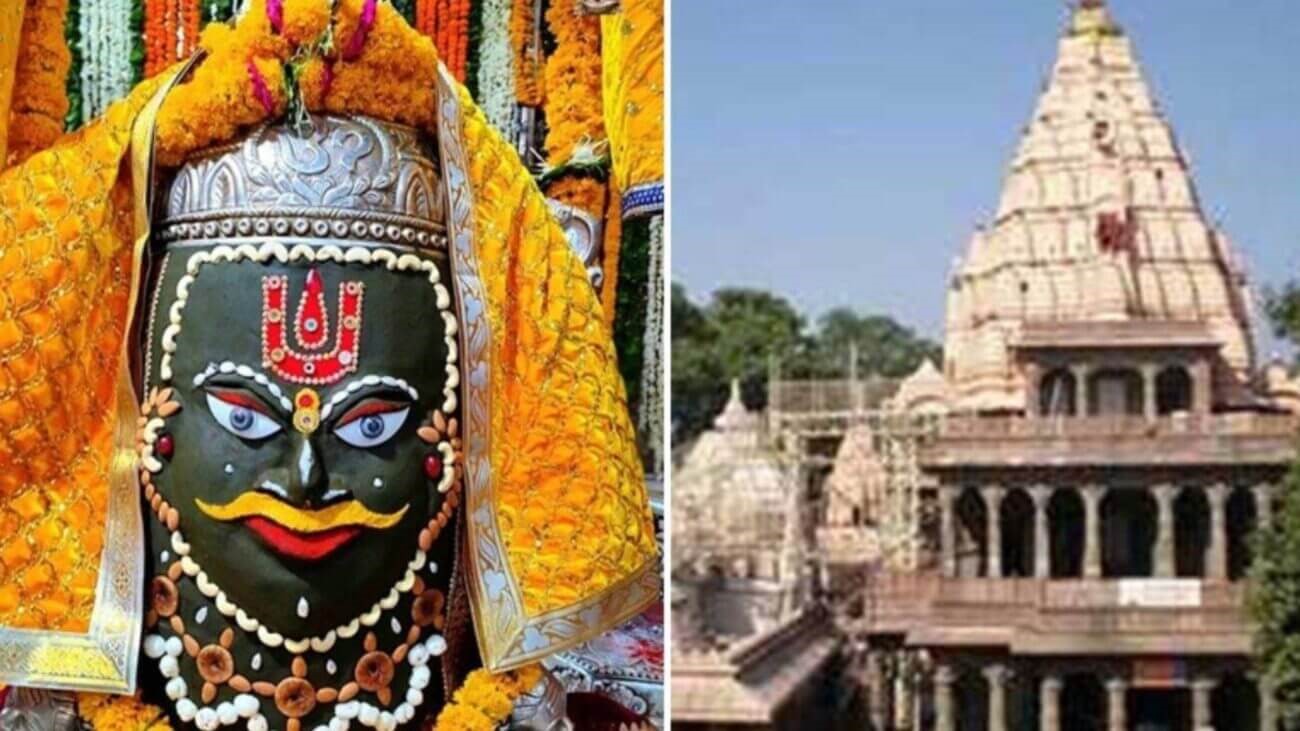
Ujjain, with its deep historical and religious significance, offers several tourist attractions. Here are some notable places to visit in Ujjain:
- Mahakaleshwar Temple: It is one of the most important and famous places to visit in Ujjain. This is one of the twelve Jyotirlingas where Bhasma Arti is performed daily and is dedicated to Lord Shiva. The Bhasma Aarti, where sacred ash is applied to the deity, is a significant ritual and is attended by a large number of devotees. The temple is located on the banks of River Shipra. The temple is facing south hence it is also known as Dakshinamurthi.
- It is believed that King Chandrasena of Ujjain, a devoted follower of Lord Shiva, was engaged in prayer. At the time of his worship, a young boy named Shrikhar requested to join him but he was denied and sent to the outskirts of the city. There, Shrikhar overheard a conspiracy by enemy kings, Ripudamana and Singhaditya, to attack Ujjain with the assistance of a demon named Dushanan.
- At that time Shrikhar prayed to Lord Shiva for the city's protection, and a priest named Vridhi also joined in the prayers for Ujjain's safety. The demons launched their assault and were on the verge of conquering the city at that time Lord Shiva appeared in his Mahakal form, to save Ujjain. In response to the request of his devotees, Lord Shiva chose to dwell in the renowned Mahakaleshwar temple in Ujjain in the form of a Shivalinga.
- Mahakaleshwar Temple Darshan Timings
- The Mahakal Temple is open from 4 a.m. to 11 p.m., conducting various rituals throughout this time. Devotees have the opportunity to engage in different ceremonies, including morning, midday, and evening aarti.
Ram Ghat
Situated on the banks of the Shipra River, Ram Ghat is a sacred spot where devotees gather to take ritualistic baths and perform religious ceremonies. The evening aarti (prayer ceremony) is a serene and spiritual experience. Ram Ghat is a major venue during the Simhastha Kumbh Mela, a grand Hindu festival held every 12 years in Ujjain. During this festival, millions of pilgrims and Sadhus (ascetics) gather at the ghats to take part in rituals and processions.
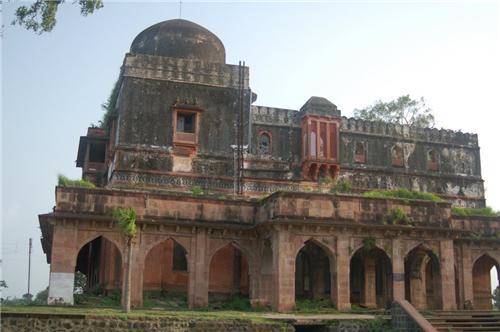
Kaliadeh Palace
Located on the island of Shipra River, this palace offers panoramic views of the surroundings. The palace was built by the Sultan of Mandu in 1458 A.D. During the time of Mahmud Khilji. According to the locals it is believed that there was an ancient Sun temple with two water bodies named as Surya Kunda and Brahma Kund.
The palace features chhatris, which are elevated, dome-shaped pavilions or canopies. These architectural elements add to the aesthetic appeal of the palace and provide shaded areas for visitors. From Kaliadeh Palace, visitors can enjoy panoramic views of the surrounding landscapes, including the flowing waters of the Shipra River and the lush greenery of the island.
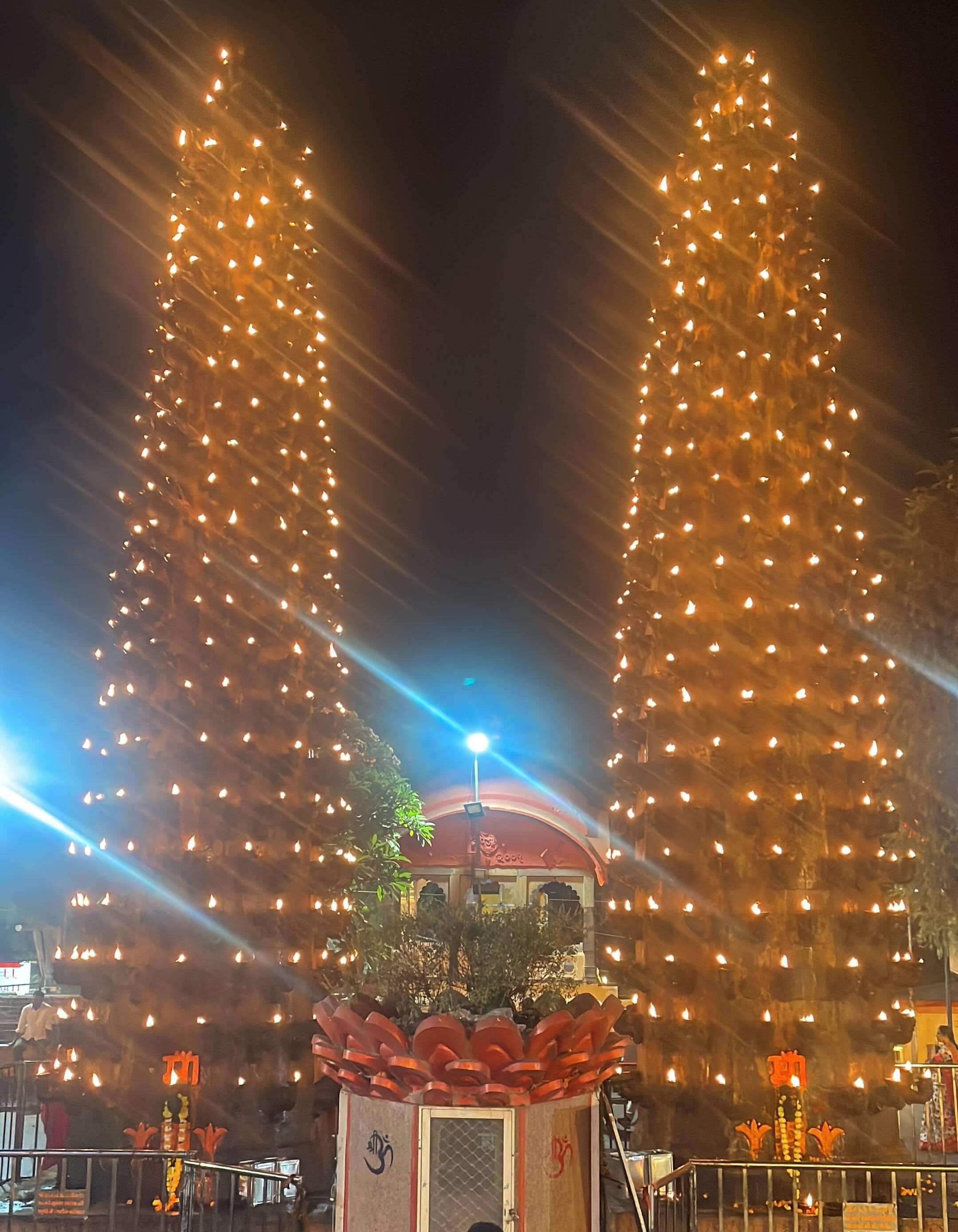
Harsiddhi Temple:
Harsiddhi Temple is a Hindu temple located in Ujjain, Madhya Pradesh, India. It is one of the prominent temples in the city and holds great religious significance. The temple is dedicated to Goddess Harsiddhi, who is considered a form of Goddess Parvati. It is one of the 51 Shakti Peethas of Mata Sati.
The goddess is seated between the idols of Mahalaxmi and Maha Saraswati. The idol of Annapurna is painted in dark vermilion color. The Sri Yantra, the symbol of power or shakti, is also enshrined in the temple. The temple was modified during the Maratha period. The main attraction is The two pillars adorned with lamps show the Maratha art. These lamps, lit during Navaratri, present a glorious spectacle. There is an ancient well on the premises, and an artistic pillar adorns the top of it.
The 9 day Navratri festival is the major festival celebrated in the Harsiddhi Mata Temple and the temple is decorated with flowers and lights.
Temple Timings: 5 AM - 7 PM
Aarti Timings: 7 AM - 8 AM & 6 PM - 7 PM
Chintaman Ganesh Temple:
This ancient temple is dedicated to Lord Ganesha and is known for its peaceful ambiance and beautiful architecture
Vedh Shala :
The "Ved Shala" in Ujjain refers to an astronomical observatory that was established in ancient times. Ujjain, historically known as Avanti or Avantika, has a rich tradition in astronomy and mathematics, and the Ved Shala is one of the prominent landmarks representing this tradition. ALso known as Jantar Mantar, it was built by Jai Singh II in 1725. The Ved Shala served as an observatory for studying celestial bodies, tracking their movements, and making astronomical calculations.
It played a crucial role in advancing astronomical knowledge in ancient India. It is said to have been equipped with various instruments for astronomical observations, including sundials, gnomons, and other devices for measuring time, angles, and positions of celestial bodies. The design of the observatory would have been aligned with the cardinal directions and celestial equator to facilitate accurate observations. Scholars and astronomers at the Ved Shala made significant contributions to the field of astronomy. They developed methods for calculating planetary positions, predicting eclipses, and determining the start of auspicious times for religious ceremonies, among other achievements.
Sandipani Ashram:
According to legend, this ashram is where Lord Krishna and Sudama received their education from Guru Sandipani. The ashram is a serene place for meditation and reflection.
Bhartrihari Caves:
These caves are associated with the great scholar-poet Bhartrihari, who is believed to have meditated here. The caves offer a peaceful retreat.
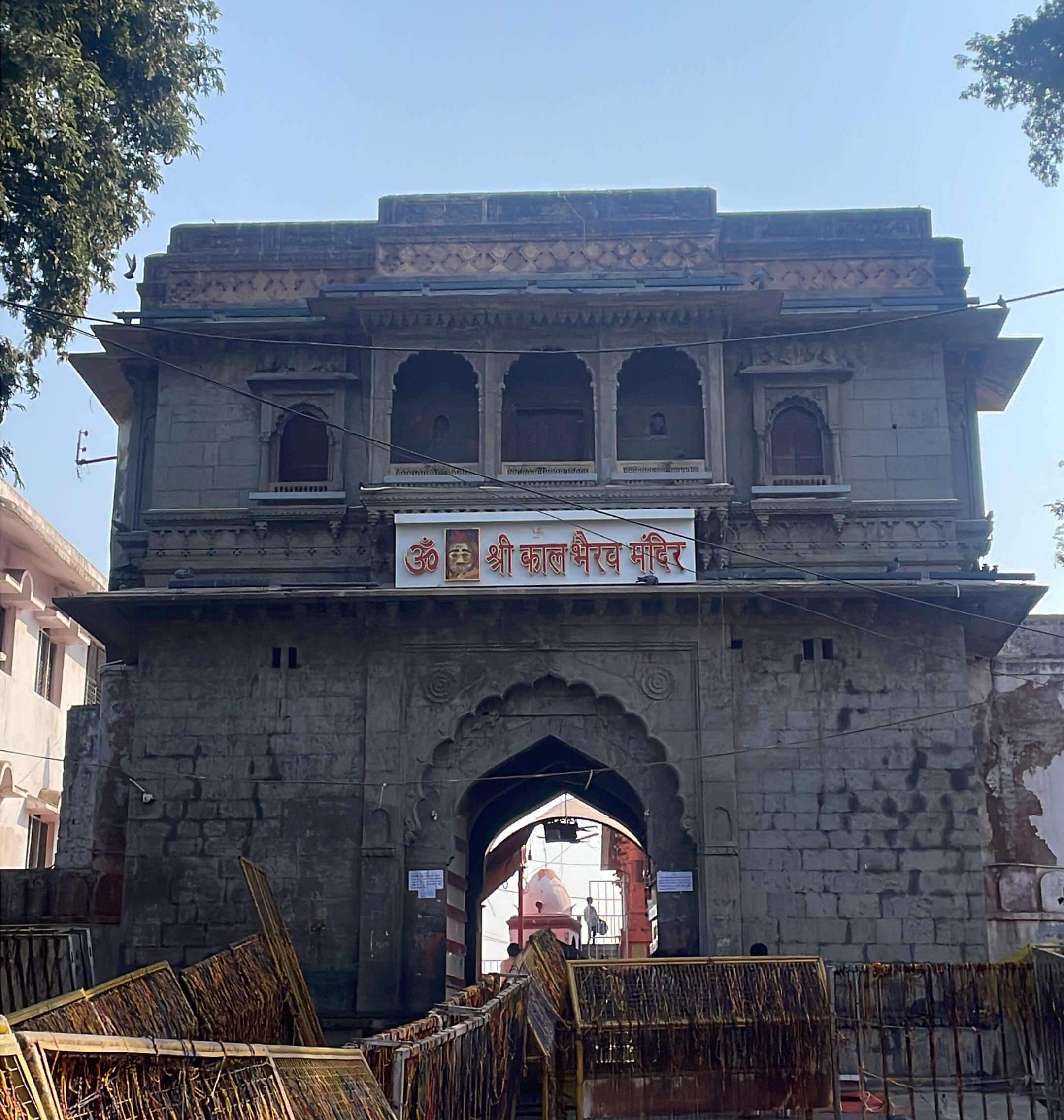
Kal Bhairav Temple:
Dedicated to Lord Bhairav, a fierce form of Lord Shiva, this temple is known for its unique rituals and the offering of liquor to the deity. The Kalabhairav Temple is situated near the banks of the Shipra River in the city of Ujjain. It is located within the Ujjain city limits, making it easily accessible to devotees and tourists. Devotees throng to the Kalabhairav Temple throughout the year. Everyday thousands of devotees offer liquor to the deity.
The devotees' hand over the liquor bottles to the priest who in turn pours the liquor on the lord lips. As the priest tilts the plate the liquor starts to disappear. Later a little bit is given to the devotee in the bottle as a prasad.Special rituals and prayers are conducted regularly in the temple premises. Additionally, festivals like Mahashivratri and Navratri are celebrated with great fervor at the temple. The temple holds immense significance for devotees who seek protection, courage, and blessings from Lord Kalabhairava. It is believed that worshiping Kalabhairava at this temple can help devotees overcome obstacles, dispel fear, and attain spiritual progress.
- Mangalnath Temple:
Situated at the confluence of the Shipra and the Kshipra rivers, this temple is dedicated to Lord Mars (Mangal). It is considered a sacred spot for Hindus.
Ujjain is certainly a must visit tourist place in Madhya Pradesh, India. The place is full of rich ancient culture of India. Do visit and share your thoughts with us here
Affiliate Disclosure:
If you make any purchase via a link on this site, I may receive a small commission with no added cost to you.
